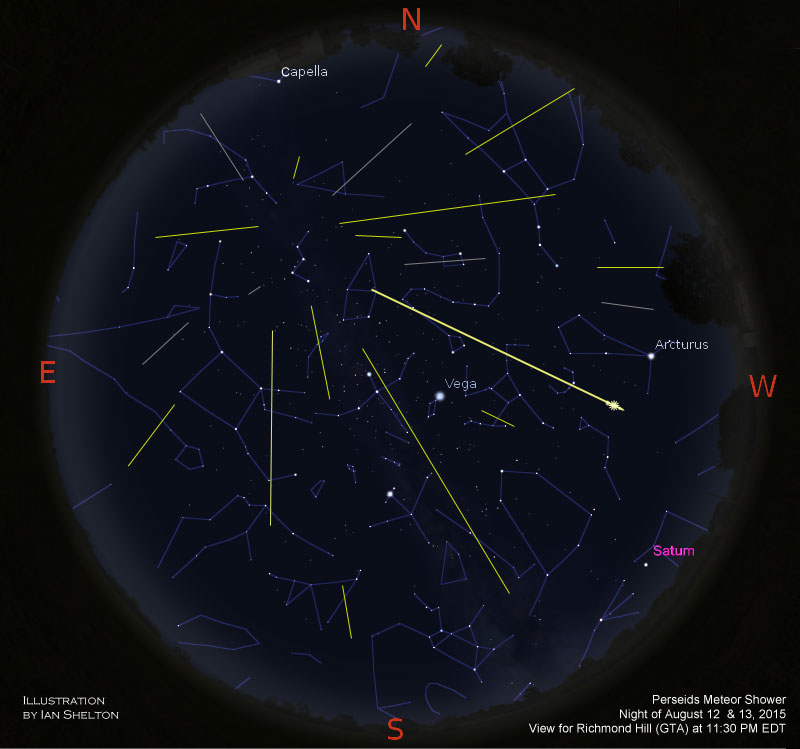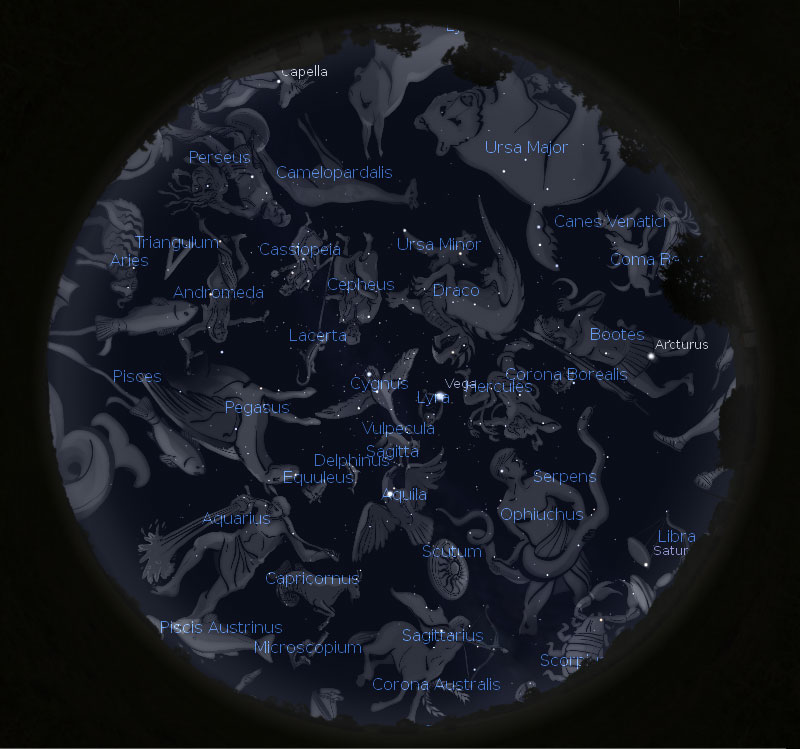

The Perseids meteor shower is always interesting and will become visible in 2015 beginning around August 9th with just a few meteors seen each hour. But the activity will steadily increase till it peaks on the morning of August 13, producing about one meteor per minute if you are observing from a dark location on a clear night. So plan to be outside on the night of Wednesday August 12th, and if you can, do some viewing into the early morning hours of Thursday before dawn begins to interfere at 4:30 EDT. That's when the shower will likely be at its best (weather permitting).
You don't need any special equipment to view the meteors, but I strongly recommend using a full bodylength reclining chair so you can comfortably be looking almost straight up at the sky for long periods of time. You should also have some snacks, a blanket and some mosquito repellant with you. Give yourself at least fifteen minutes to let your eyes get used to the dark so you can see the most meteors. And try to avoid using your cell phone or any other sources of light, as even a few seconds looking at your phone's display can undo the fifteen minutes it took to get used to the dark. The meteors can and will appear everywhere in the sky, though they will seem to be coming from the direction of the constellation Perseus (hence, their name). The Perseids will remain active for a few days after its peak, but with progressively fewer meteors to see each night.
In the early morning hours around August 13, the Milky Way can be seen in all of its glory passing directly overhead and spanning the whole sky. Use a pair of binoculars to explore the many colourful stars and star clusters embedded in the glow from our host galaxy's hundreds of billions of stars! Saturn is well-placed in the southwestern sky as soon as it gets dark, but sets around midnight. Even a very modest telescope should be able to show you Saturn's rings, though it takes something like a 100mm (4-inch) telescope to begin to see real detail in the rings and on the ball of the planet. The Moon will be back in the evening sky on August 16th as a thin crescent. And for a real challenge, you might want to try seeing Venus appearing as a faint ring in the daytime on August 15. This requires a telescope and a lot of skill and CAUTION, as Venus will only be a few degrees away from the Sun. So this challenge is NOT for the novice or for children!!!
Clear skies everyone!